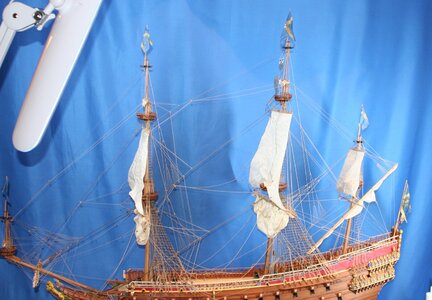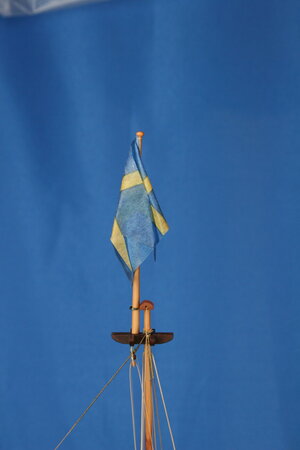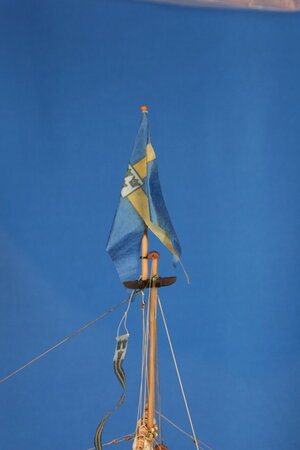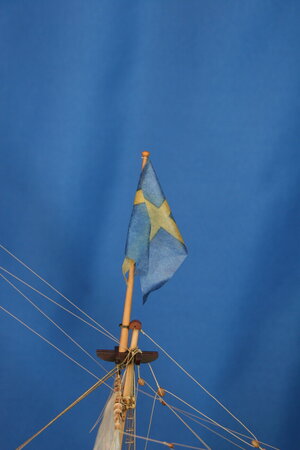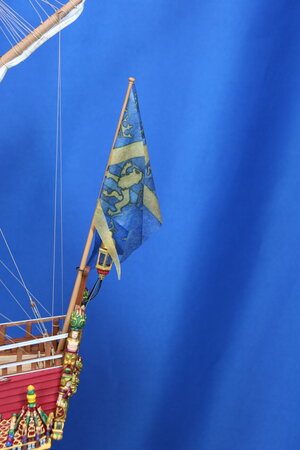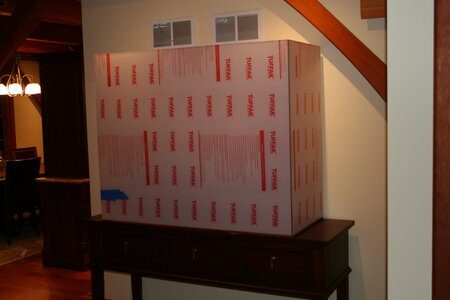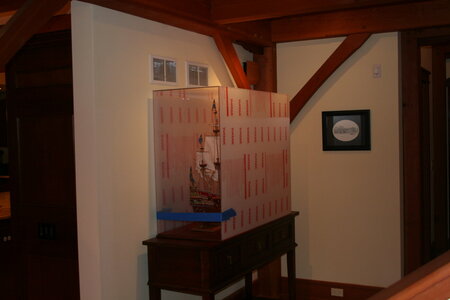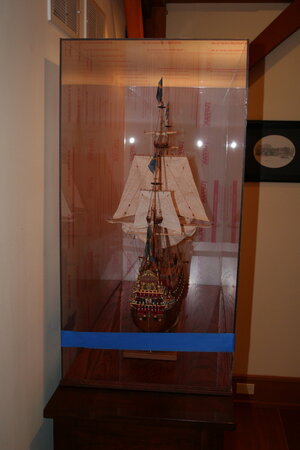Thank you kindly, Jack! Excellent post!Hello Paul,
Yes the ink is pretty much consistent on both sides. I have discovered that there are several factors that cause variation, most important I think is the quality of the ink, if you use bog standard ink jet inks there is a big risk of bleeding when you apply the pva., particularly reds, see white ensign. Secondly the type of pva., I hadn't thought about this because I have always used an exterior quality Evo-stik but thinking about it applying steam to an ordinary pva. might 'wash it out' of the fabric so the more the water resistant pva. the better. Next the silk fabric, there are at least three different weave qualities I have come across, the customs flag below was printed on the most open weave and this lets the ink through the easiest but the flag is a bit transparent, (personally I don't think that a problem but others might). On the tighter weaves I found you have to set the ink-jet to its highest quality settings i.e. very slow printing, see Dutch flag. I would still like to use this weave but I cant find it over here any more. Mind you on the highest quality setting, using indelible ink applied to the finest silk it starts to get expensive. The other oblivious factor is the quality of the original flag you want to copy.
View attachment 342270View attachment 342272View attachment 342273View attachment 342274View attachment 342275
The 'bleed' on the white ensign is not really noticeable with the naked eye. I lifted the fabric from the backing paper on the customs flag to show the ink transfer, normally I would coat the flag with pva then let it dry then peel and cut to size and shape. The texture looks quite open but the pva fills it a bit, although too much pva and the flag becomes too shiny. I thin the pva until it just drops of my spatula. The Dutch flag is printed on the finest weave at the highest setting. Hope this helps but when all is said and done you just have to play around until you find what you like. Cheers JJ..
Last edited:




